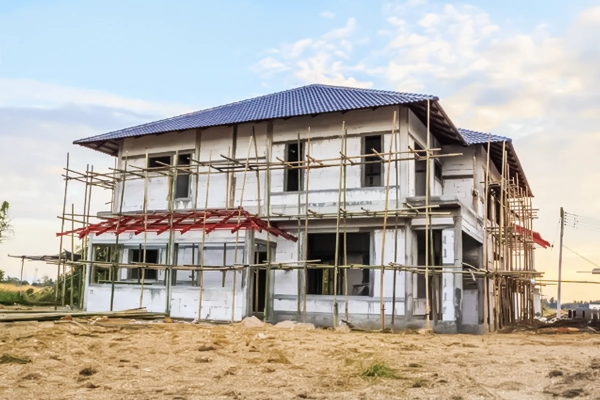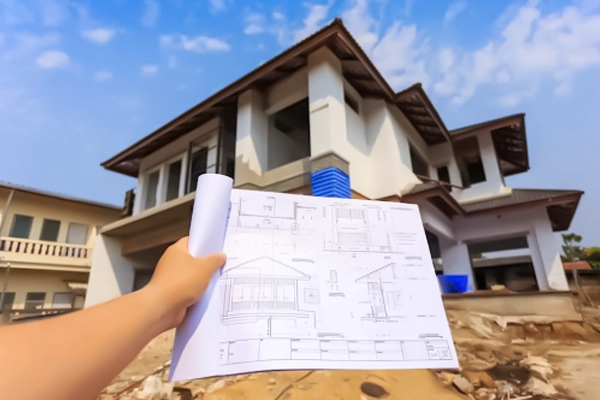Home loans are a critical financial tool for individuals seeking to purchase a house. In India, the demand for home loans has surged with the growing real estate market. This comprehensive guide delves into the types of home loans available, eligibility criteria, and the application process, providing you with all the necessary information to make an informed decision.
Home loans in India offer a practical solution for individuals and families aspiring to own a home. Whether you’re looking to buy a new house, construct your dream home, or renovate an existing property, understanding the various types of home loans, eligibility criteria, and the application process is essential. This guide will help you navigate the complexities of home loans in India, ensuring you secure the best deal possible.
Types of Home Loans
Home Purchase Loan

Home purchase loans are the most common type of home loan. These loans are specifically designed for individuals who wish to buy a new or resale residential property. The loan amount is typically up to 80-90% of the property value. Home purchase loans are ideal for first-time homebuyers and those looking to upgrade to a larger property. The interest rates for these loans can be fixed or floating, and the repayment tenure can extend up to 30 years. It’s crucial to compare different lenders to find the best interest rates and terms that suit your financial situation.
Home Construction Loan

If you own a plot of land and want to construct a house on it, a home construction loan is the right option. These loans cover the cost of construction and are disbursed in stages based on the progress of the construction. Home construction loans are tailored for those who prefer to build their own homes rather than buy a pre-constructed property. The loan amount is typically disbursed in phases, aligning with the stages of construction. Borrowers must provide detailed construction plans and cost estimates to the lender. Regular inspections ensure that the funds are used appropriately.
Home Improvement Loan

Home improvement loans are ideal for individuals looking to renovate, repair, or upgrade their existing homes. This loan can cover various expenses such as painting, flooring, plumbing, and more. These loans are perfect for homeowners who want to enhance the comfort and value of their homes. Whether it’s a minor repair or a major renovation project, home improvement loans provide the necessary funds. The loan amount depends on the estimated cost of the renovation and the borrower’s repayment capacity.
Home Extension Loan

For those who want to extend or add more space to their existing homes, a home extension loan is a suitable choice. It provides the necessary funds for constructing additional rooms, floors, or other extensions. Home extension loans help homeowners meet their growing space requirements without moving to a new house. Whether you’re adding an extra bedroom, extending the kitchen, or building a new floor, these loans cover the construction costs. The loan amount is based on the construction estimates and the borrower’s income.
Land Purchase Loan

Land purchase loans are offered to individuals who wish to buy a plot of land for residential construction. These loans cover the cost of the land and are useful for future home construction plans. Land purchase loans are ideal for those who want to buy a plot and build their dream home later. These loans finance the purchase of residential plots within municipal limits or development authority-approved areas. Borrowers must ensure the land has clear titles and meets the lender’s criteria.
NRI Home Loan

Non-Resident Indians (NRIs) looking to purchase property in India can avail themselves of NRI home loans. These loans cater specifically to the financial needs of NRIs and have certain eligibility criteria and documentation requirements. NRI home loans enable NRIs to invest in residential properties in India. These loans have specific eligibility criteria, including a stable income, a good credit history, and proper documentation. NRIs can apply for home purchase, construction, or renovation loans. It’s essential to consult with lenders who specialize in NRI home loans to understand the terms and conditions.
Eligibility Criteria for Home Loans in India
Income and Employment Stability
Lenders assess the applicant’s income and employment stability to ensure they can repay the loan. Salaried individuals, self-employed professionals, and businessmen must provide proof of steady income. Salaried individuals need to submit their salary slips, income tax returns, and bank statements. Self-employed professionals must provide their profit and loss statements, balance sheets, and IT returns. Lenders prefer applicants with a stable employment history and consistent income flow.
Credit Score
A good credit score is crucial for home loan approval. It reflects the applicant’s creditworthiness and repayment history. A score above 750 is generally considered favorable. A high credit score indicates financial discipline and a lower risk of defaulting on the loan. Applicants with lower credit scores might still get approved, but they may face higher interest rates. It’s advisable to check your credit score before applying for a loan and take steps to improve it if necessary.
Age
The applicant’s age at the time of loan application and the loan tenure are important factors. Most lenders prefer applicants aged between 21 and 65 years. Younger applicants have the advantage of longer repayment tenures, which can reduce the monthly EMI burden. Older applicants might have shorter tenures, but including a younger co-applicant can extend the tenure.
Property Value
The property’s value and location play a significant role in determining the loan amount. Lenders typically finance 80-90% of the property’s market value. Lenders conduct a thorough evaluation of the property to determine its market value. The property’s location, age, amenities, and legal clearances affect its value. Borrowers must ensure the property has a clear title and meets the lender’s criteria.
Existing Liabilities
Applicants must disclose any existing loans or liabilities. High existing debt can affect the loan approval process and the amount sanctioned. Lenders evaluate the applicant’s debt-to-income ratio to ensure they can manage additional loan repayments. Clearing existing debts before applying for a home loan can improve eligibility and increase the loan amount sanctioned.
Co-Applicant
Including a co-applicant, especially one with a good credit score and stable income, can enhance the eligibility for a higher loan amount. A co-applicant shares the loan responsibility and increases the overall income considered for loan approval. This can result in a higher loan amount and better terms. Common co-applicants include spouses, parents, or siblings.
Application Process for Home Loans
Research and Compare
Begin by researching different banks and financial institutions offering home loans. Compare interest rates, processing fees, loan tenures, and other terms and conditions. Various online platforms provide tools to compare home loan offers from multiple lenders. It’s essential to consider factors like interest rates, processing fees, prepayment charges, and customer service. Reading reviews and seeking recommendations can also help identify the best lender.
Check Eligibility
Use online home loan eligibility calculators to assess your eligibility. These tools provide an estimate based on your income, age, and other factors. Eligibility calculators help determine the maximum loan amount you can borrow based on your financial profile. Input details like monthly income, expenses, existing EMIs, and desired loan tenure to get an estimate. This helps in shortlisting suitable loan offers.
Prepare Documentation
Gather all necessary documents such as identity proof, address proof, income proof, property documents, and bank statements. Ensure all documents are up-to-date and valid. Lenders require specific documents to verify your identity, income, employment, and property details. Common documents include Aadhaar card, PAN card, salary slips, IT returns, property title deed, and recent bank statements. Organizing documents in advance can streamline the application process.
Fill Application Form
Fill out the home loan application form provided by the lender. Provide accurate details to avoid delays in processing. The application form captures personal details, loan requirements, employment history, and financial information. Double-check all entries for accuracy before submitting the form. Incomplete or incorrect information can lead to rejection or delays in processing.
Submit Application
Submit the completed application form along with the required documents to the lender. Some banks offer online application submission for convenience. Online submission allows for faster processing and reduces paperwork. Ensure all documents are uploaded correctly and securely. Track the application status through the lender’s online portal or customer service for updates on approval and processing.
Processing and Verification
The lender will process your application and verify the documents. This includes credit score checks, property evaluation, and employment verification. Verification ensures that all information provided is accurate and meets the lender’s criteria. The lender may conduct a physical inspection of the property to verify its condition and legal status. Any discrepancies or issues identified during verification may delay approval or require additional documentation.
Loan Sanction and Offer Letter
If your application is approved, the lender will issue a loan sanction letter detailing the loan amount, interest rate, tenure, and other terms. Review the offer carefully before accepting. The sanction letter confirms the approval of your home loan application. It outlines the terms and conditions, including the EMI amount, repayment schedule, processing fees, and penalties for late payments. Compare the offer with other lenders to ensure you get the best deal.
Property Verification
The lender will conduct a legal and technical verification of the property to ensure it meets all requirements and is free from any disputes.Verification includes checking the property’s ownership documents, approvals from local authorities, building plans, and compliance with zoning regulations. The technical evaluation assesses the construction quality, amenities, and structural integrity. Clearing these verifications is crucial for loan disbursal.
Loan Disbursement
Once all verifications are complete and the loan agreement is signed, the lender will disburse the loan amount. The funds are usually transferred directly to the seller or builder. Loan disbursal occurs after all legal formalities are completed and the borrower meets all conditions specified in the sanction letter. Ensure timely payment of stamp duty and registration fees to facilitate smooth property transfer. The loan disbursal process may take a few days after approval.
FAQ about Understanding Home Loan
Eligibility criteria typically include factors such as income stability, credit score, age, property value, and existing liabilities. Lenders assess these criteria to determine the applicant’s repayment capacity.
Essential documents include identity proof, address proof, income proof (salary slips, IT returns), property documents (title deed, NOC), and bank statements. These documents verify your identity, financial stability, and property ownership.
Home loans in India offer fixed and floating interest rates. Fixed rates remain constant throughout the loan tenure, while floating rates fluctuate based on market conditions. Borrowers can choose based on their preference for stability or flexibility.
EMI calculation considers the loan amount, interest rate, and tenure. Online EMI calculators help determine the monthly installment based on these factors. Longer tenures result in lower EMIs but higher overall interest payments.
Home loan borrowers can avail tax benefits under sections like 80C (principal repayment), 24(b) (interest payment deduction), and others. These benefits reduce the overall tax liability, making home ownership more affordable.

